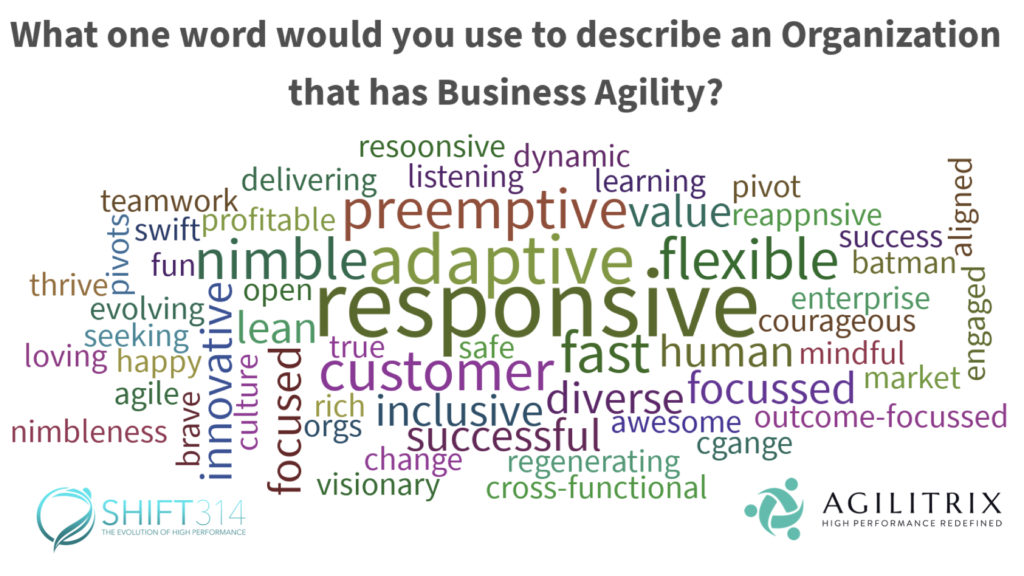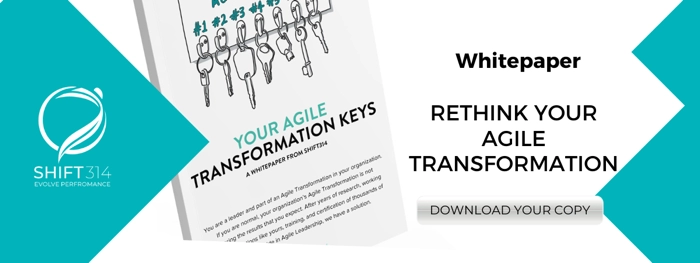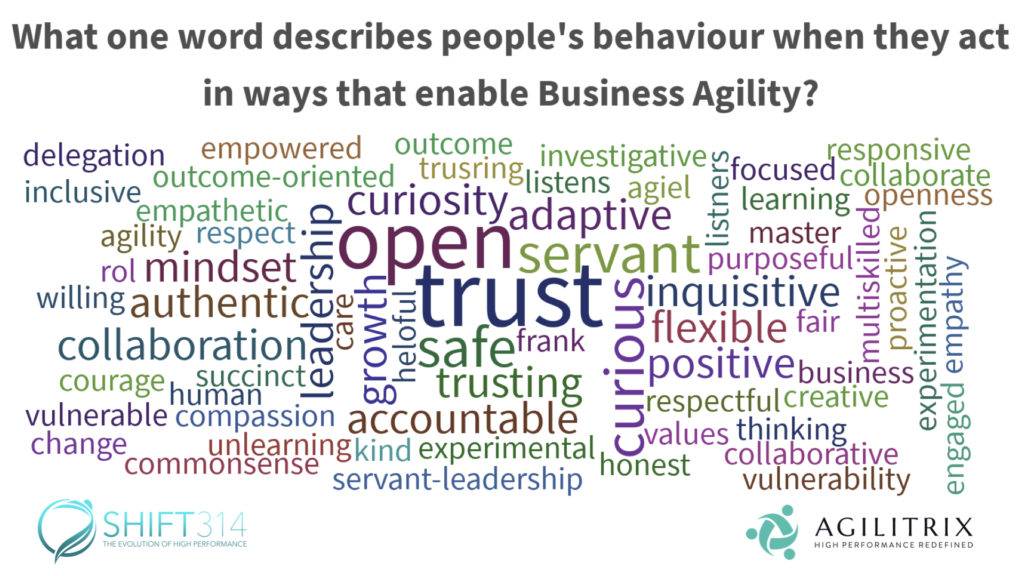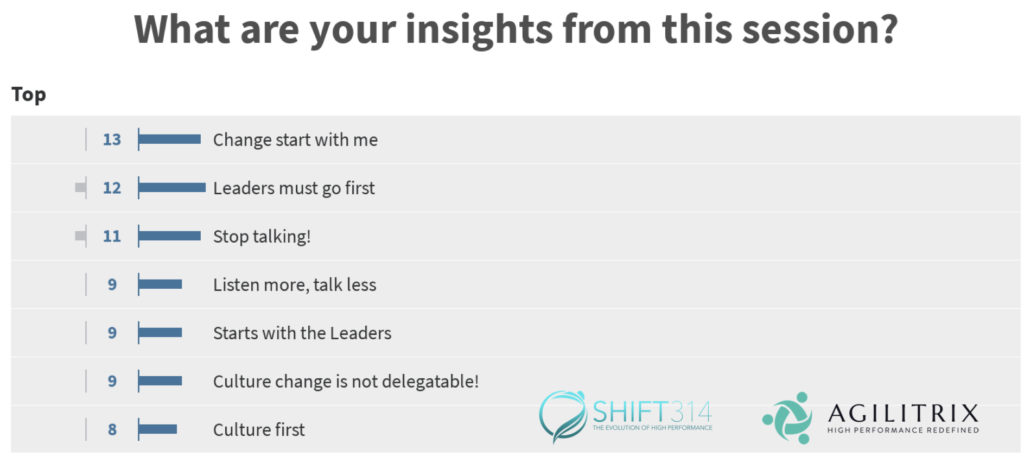There is a lot of hype, confusion and conflicting messages around Business Agility. Organizations know that they need to evolve to compete in the dynamic marketplace yet are struggling to make real progress. In this article, we will cut through the noise to give you the understanding and practices needed unlock Business Agility in your organization.
Practical Definition of Business Agility
What is Business Agility?
Take a moment to reflect on your understanding:
What adjectives would you use to describe and organization that has Business Agility?
Most definitions share a similar essence: Business Agility is the ability for an organization to adapt rapidly to its environment. Let’s go deeper to understand what this really means.

At the Sydney, Australia Meetup on Business Agility, the image below shows what the audience co-created to answer this very same question. The size of the word is proportional to the importance of the word. We know from the Wisdom of Crowds that crowd-sourcing solutions tends to create accurate answers. The data shows that the most important organizational characteristics needed for Business Agility are:
- Responsive
- Adaptive
- Nimble
- Flexible
- Fast
Even more interesting are the weaker signals that go beyond what people normally associate with it: learning, evolving, and courageous.
These words provides a clear picture of what Business Agility really is. It allows one to examine current functioning and invites a shared desire for the future.

Take a moment to reflect: Are these the words people would use to describe your current organization? How important is it for your leadership team to create an organization that has the attributes of Business Agility?
Key shift needed for Business Agility
What does it take to create an organization that has Business Agility? The one key shift is to understand the role people play in creating it.
Take a moment to consider your opinion:
What one word describes people’s behaviour when they act in ways that enable Business Agility?
Often the focus is on the organizational structures, or the need to focus on specific practices or strategic changes to the organization. On deeper reflection, we understand that organizational culture is the foundation of high performance. And we may understand organizational culture as the aggregate of the behaviours of all the people.

The infographic to the right shows the behaviours that will lead to Business Agility. When people routinely demonstrate these behaviours, Business Agility will be the emergent outcome. It is a reflection of the moment to moment actions and responses of the all the people. Namely:
- Open
- Trust
- Safe
- Curious
- Adaptive
- Growth
When people are adaptive, then the organization is adaptive. And for this to happen, people in the organization need to be open, trusting, create safety so that curiosity and growth is the norm.
When people are adaptive, then the organization is adaptive.
The one key shift needed to create Agility is a shift in the behaviours of the people in the organization.
How to create Business Agility
The way to create agility and adaptiveness is then clear: it will emerge as the behaviours of the people in the organization evolve. It is not about having a specific process or structure in your organization – it’s about the people.
Although, the evolution of people and organizations is complex topic, there are some principles that can be understood as a very practical way to get started. Each principle, when applied can be used to generate more helpful choices in how we interact with others. The principles and where to learn more are as follows:

- Change Starts with me. You can’t change anyone else, but you can change yourself. Read more.
- Leaders go first. A leader is someone who leads. Each of us, regardless of role, may choose to lead a shift. Read more.
- Stop talking and listen more. Richard Branson says that he never learned anything by talking. Read more.
- Culture change is not delegable. For a change in the whole organization, leaders must change their behaviours along with everyone else. Read more.
- Culture first. Drucker’s axiom – Culture eats Strategy for Breakfast tell the whole story. Focus on what is most important. Read more.
A Clear Path
In this post we have outlined a clear practical path for creating Business Agility. The challenge is not with understanding the message: it is very straight-forward and even obvious. One challenge is that the message is the opposite of “Business as Usual”. The changes above are not supported in most work environments.

The larger challenge is that as human beings we typically have a lifelong pattern of focusing on other people’s challenges rather than our own. The simple awareness and choice of what we want to create is the beginning of one’s journey of leadership evolution. Once started, there are practical tools such as the 4A’s Leadership model to foster and accelerate ones growth. Ongoing self-reflection is the path of exceptional leadership. It is essential for those interested in creating a high performance organization.


